


In the design and manufacturing of fire trucks, the choice of tank material directly affects the vehicle's performance, service life, and maintenance costs. As a core component of firefighting equipment, water or foam tanks must not only carry large volumes of extinguishing agents but also maintain structural integrity in various harsh environments. Currently, the mainstream materials for fire truck tanks on the market mainly include carbon steel, stainless steel, aluminum alloy, and composite materials, each with unique performance characteristics and suitable applications. This article will provide an in-depth analysis of the properties of these commonly used materials to help fire departments, corporate firefighting teams, and fire truck procurement units make informed decisions.
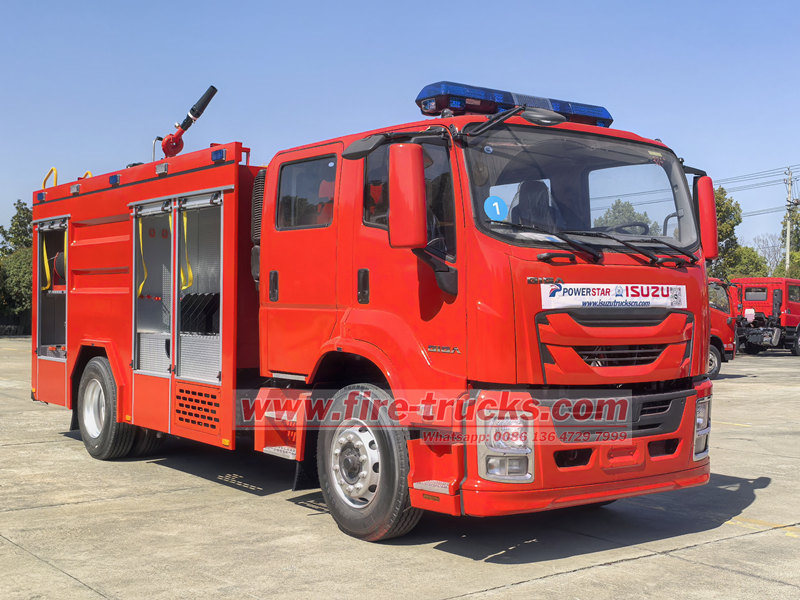
1. Carbon Steel Tanks: A Cost-Effective Traditional Choice
Carbon steel is one of the oldest and most widely used materials for fire truck tanks. Its greatest advantage lies in cost-effectiveness, as the material is relatively inexpensive, with mature processing techniques and excellent weldability, making it particularly suitable for small and medium-sized fire stations with limited budgets.
In terms of structural strength, carbon steel tanks fully comply with the requirements of GB7956.1-2014 "General Technical Specifications for Fire Trucks." Most water tankers and foam fire trucks using carbon steel tanks undergo rigorous pressure testing and load calculations, with a typical service life of 10–15 years. In practical applications, carbon steel tanks are usually treated with sandblasting and rust removal and coated with anti-corrosion paints like epoxy asphalt to enhance durability.
However, carbon steel tanks also have notable drawbacks. First, they require high maintenance for corrosion prevention, especially in humid or coastal areas, where annual inspections and necessary repairs to the coating are essential. Second, carbon steel has a high density, making the tank about 30% heavier than aluminum alloy tanks of the same volume, which affects the vehicle's payload and mobility. Additionally, long-term use can lead to rust formation on the inner walls, potentially compromising water quality, making it unsuitable for environments with stringent water purity requirements.
Purchasing Advice: Suitable for fire departments with limited budgets in inland areas without extreme conditions. When purchasing, pay attention to anti-corrosion processes, prioritizing products with multi-layer protection such as "sandblasting + epoxy primer + polyurethane topcoat," and establish a regular maintenance plan.
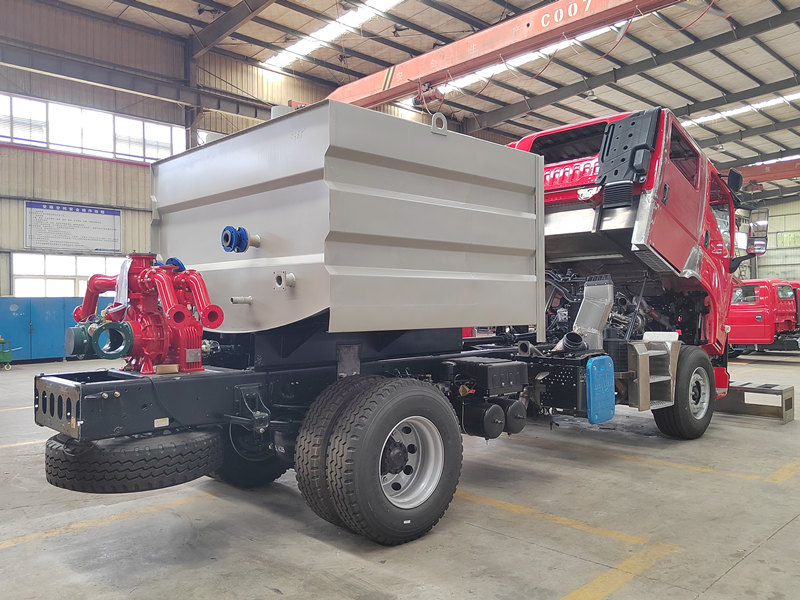
2. Stainless Steel Tanks: A High-End Corrosion-Resistant Solution
Stainless steel is the mainstream choice for high-end fire truck tanks, particularly for specialized vehicles like airport fire trucks and industrial fire trucks. Its greatest advantage is its excellent corrosion resistance, which can withstand the erosion of water and foam extinguishing agents, eliminating the need for additional anti-corrosion treatments and significantly reducing long-term maintenance costs.
From a material perspective, stainless steel tanks offer three core advantages:
1. Superior hygiene performance, ensuring water quality is not compromised, making it ideal for fire trucks serving medical facilities, food processing plants, and other environments sensitive to water purity.
2. Long service life, typically exceeding 20 years under normal use.
3. Aesthetic appeal, maintaining a polished appearance, which is important for units with high visual standards.
However, stainless steel tanks also have notable disadvantages. First, the cost is high, with material prices 3–5 times that of carbon steel, leading to a significant increase in the overall vehicle price. Second, processing is challenging, requiring specialized welding equipment and skilled technicians due to the material's high welding demands. Additionally, stainless steel has low thermal conductivity, potentially necessitating additional insulation in extreme temperatures. Moreover, stainless steel is prone to dents upon impact, which are difficult to repair.
Purchasing Advice: Suitable for specialized firefighting units with ample budgets and high requirements for water quality and durability, such as airports and petrochemical plants. Opt for stainless steel with a thickness of 3–4mm, and consider higher molybdenum-content variants for coastal or industrial areas.
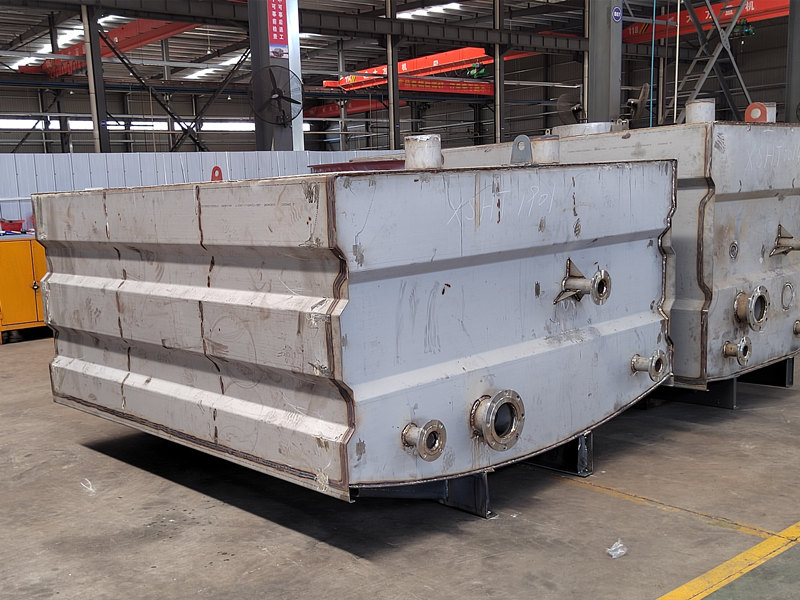
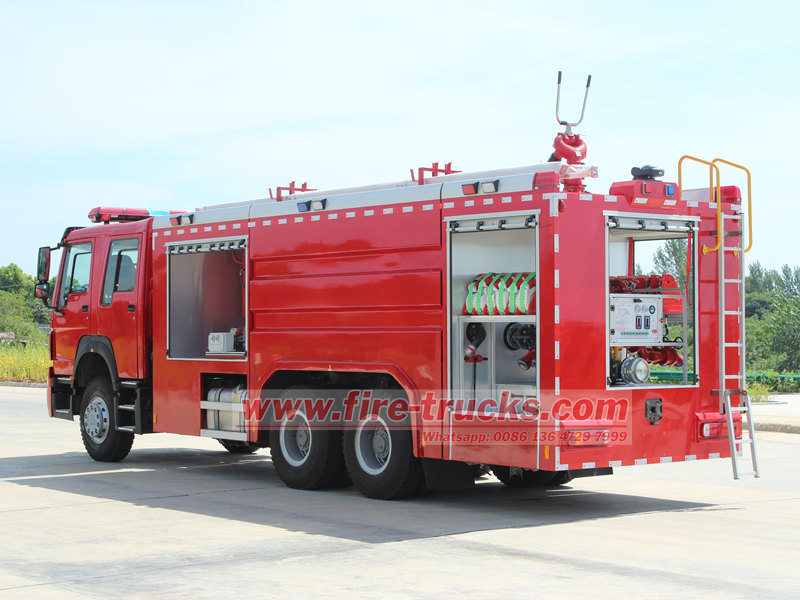
3. Aluminum Alloy Tanks: The Ideal Lightweight Choice
Alloys such as 5083 and 6061 aluminum are the primary materials for lightweight fire truck tanks, with high market penetration in Europe and the U.S. In recent years, China's high-end fire trucks have also begun adopting this material. The greatest advantage of aluminum alloy is its light weight, with a density only about one-third that of steel, significantly reducing the vehicle's weight and improving payload capacity and fuel efficiency.
From a performance standpoint, aluminum alloy tanks offer several advantages:
1. Lightweight, being 30%–40% lighter than carbon steel tanks of the same volume, allowing water tankers to carry more extinguishing agents or additional equipment.
2. Good corrosion resistance, forming a dense oxide layer on the surface, making it particularly suitable for humid or rainy regions.
3. Excellent formability, enabling the creation of more complex structural shapes.
4. High recyclability, contributing to environmental sustainability.
However, aluminum alloy tanks have limitations:
1. Higher initial cost, with material prices about 2–3 times that of carbon steel.
2. Lower strength, often requiring additional reinforcement ribs to ensure structural rigidity.
3. Complex welding processes, necessitating specialized techniques like MIG welding.
4. Poor wear resistance, leading to scratches on the inner surface over time. Additionally, aluminum alloy is prone to galvanic corrosion when in contact with other metals, requiring careful insulation treatment.
Purchasing Advice: Suitable for urban fire departments prioritizing vehicle payload and fuel efficiency, especially those with frequent emergency responses. Choose aluminum alloy with a thickness of 5–6mm, and ensure the manufacturer has extensive experience in aluminum tank production.
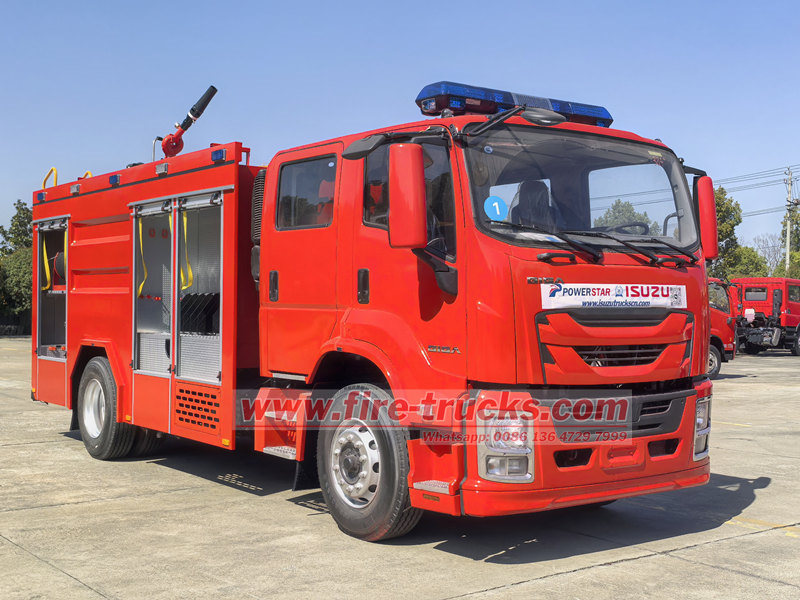
4. PP Plastic Tanks: A Lightweight, Corrosion-Resistant Option
Polypropylene (PP) plastic is an emerging material for fire truck tanks, increasingly used in chemical fire trucks and specialized firefighting vehicles. The standout feature of PP is its exceptional resistance to chemical corrosion, capable of withstanding most acids, alkalis, salts, and other chemicals, making it ideal for storing specialized extinguishing agents.
Key advantages of PP plastic tanks include:
1. Light weight, with a density of only 0.9–0.91 g/cm³, about 30% lighter than aluminum alloy.
2. Complete rust resistance, eliminating the need for anti-corrosion maintenance.
3. Simple molding process, allowing seamless one-piece construction.
4. Smooth inner walls, reducing fluid resistance and facilitating rapid discharge.
However, PP tanks have significant limitations:
1. Limited temperature resistance, with a maximum continuous use temperature of around 80°C, making them prone to deformation in high-temperature environments.
2. Low rigidity, often requiring steel frames for additional support.
3. Poor impact resistance, especially in low temperatures where brittleness increases.
4. Material aging issues, as prolonged UV exposure can shorten service life. Additionally, the flame-retardant properties of PP must be carefully considered, requiring specially modified grades.
Purchasing Advice: Suitable for specialized fire trucks carrying chemical extinguishing agents, such as those deployed in chemical plants or laboratories. Opt for reinforced PP sheets with a thickness of 8–12mm and ensure robust steel frame support. During procurement, prioritize reviewing material flame-retardant ratings and chemical resistance test reports.
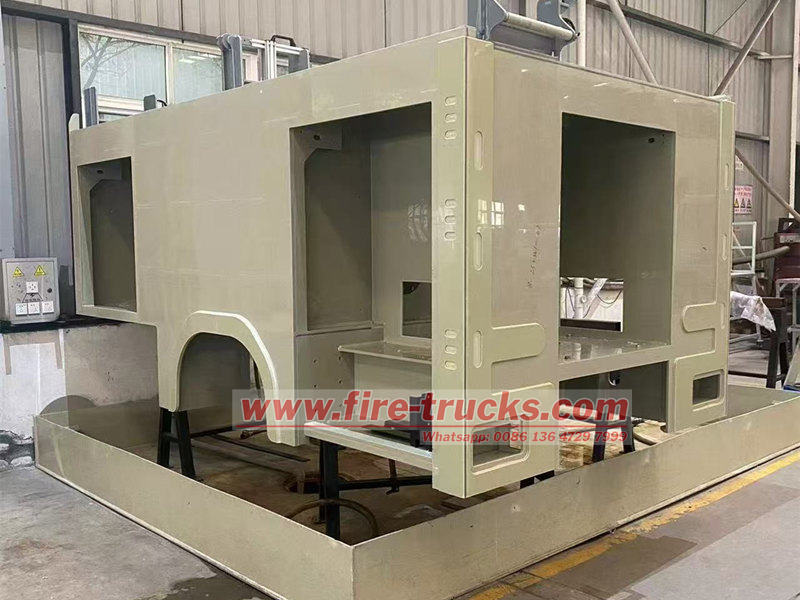
5. Comprehensive Comparison of Materials
To help users better understand the characteristics of each material, we’ve compiled a comparison table:
|
Material Type |
Relative Weight |
Corrosion Resistance |
Cost Index |
Service Life |
Suitable Applications |
|
Carbon Steel |
100% |
★★☆☆☆ |
★☆☆☆☆ |
10–15 years |
Conventional fire trucks |
|
Stainless Steel |
110% |
★★★★★ |
★★★★☆ |
20+ years |
Airport/high-end fire trucks |
|
Aluminum Alloy |
60% |
★★★★☆ |
★★★☆☆ |
15–20 years |
Urban fire engines |
|
PP Plastic |
40% |
★★★★★ |
★★☆☆☆ |
8–12 years |
Chemical fire trucks |
Note: Relative weight is based on carbon steel as 100%; more ★ indicates higher cost
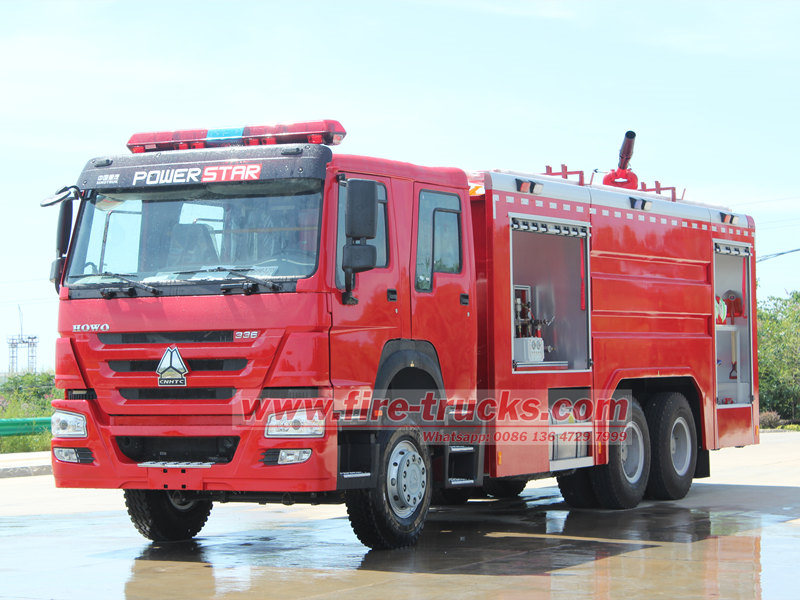
You may be interested in the following information